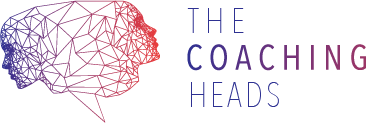Table of contents
- What is Learning and Development?
- Why is learning and development important?
- Why is learning and development important for employees?
- What are learning and development goals?
- How do you develop a Learning & Development strategy?
- What are the types of Learning and Development?
- What is learning and development in the workplace?
- Where do companies go wrong with learning and development?
Learning & Development (short: L&D) is a field in the workplace – generally a subset within human resources.
It focuses on the employees’ training needs, and analyses what it takes in terms of professional, functional and interpersonal skills to make the organization work well.
Based on this analysis, the L&D strategy aims at the articulation of training plans, generally developed on three mentioned parallel axes, in order to primarily guarantee the operational efficiency and sustainability of a company, but also and above all to offer professional and personal development for individual employees.
Modern theories related to L&D, in fact, stem from the belief that an effective training and development strategy for individuals brings important added value to the quality of the entire organization.
So, according to these theories, a varied training catalogue that offers opportunities for developing and learning new skills will necessarily lead to a stronger sense of belonging and identification towards the company.
It is therefore assumed that where a stronger and well-defined Learning & Development strategy is found, employee engagement is also higher, with a stronger degree of satisfaction and loyalty towards the company, less turnover and a more positive employer branding, which leads to increased mouth-to-mouth propaganda.
What is the difference between learning and development?
Learning and development is normally understood as a “full package” within a company’s HR strategy, but have you ever wondered what the single words mean in practice and what (if any) is the difference between them?
Learning
Right from birth, human beings are ready to learn.
During the course of our lives we learn both through formal education and by observing, experimenting and engaging with our environment.
Think of the human brain as a box: learning is the inward process of taking items from the outside world and accumulating them inside our box.
Learning can also be visualized as an horizontal movement of progressive competence and knowledge acquisition.
Development
Development heavily relies on learning, however, going back to our box metaphor, it is an outward process: we take the items in our box and create something new with them.
For example, if you are very good at analytical tasks, but you struggle to meet deadlines, you might attend a training on time management where you learn practical ways that help you develop your efficiency.
Development is indeed often connected to our skills, rather than our knowledge and could be visualized as a vertical movement of personal improvement and skills enhancement.
Claiming that learning and development is important is actually an understatement. L&D represents a fundamental win-win for both employees and the business.
Why?
For employees
What would you reply to someone asking you: how do I keep myself motivated in my job?
Our answer is: never stop learning!
From self-reflection to building on existing skills or acquiring new ones: whatever keeps the brain active and stimulated has positive effects on morale, attitude and even self-confidence.
Another key word is: purpose. The sense of working for a common goal and being invested in the company’s success is enhanced by the perception that the company actually cares about my personal and professional growth, not only about my KPIs.
For the business
The potential of solid training and development programs goes way beyond attracting new talent. Several studies actually proved that the more a business is willing to invest in L&D, the higher their revenues.
In addition, happy employees means lower turnover (and hiring costs), less absenteeism, and higher quality of work.
Aside from profit, what L&D does is keeping the company competitive in the ever-changing modern market, by closing any potential knowledge, technical or skill gaps.
The Baby Boomers’ approach of “get a job and stick with it for life” is long gone.
Millennials and Gen Z are constantly looking for new experiences, outside and inside the workplace.
In order to retain, motivate and develop these new generations of talent, learning and development is no longer a nice-to-have, reserved for management positions, but an expected part of the job package at any level.
There are a number of reasons why employees highly value the opportunity to learn and grow, including:
- Improved ability to perform their tasks, resulting in a higher sense of self-satisfaction.
- Closing knowledge- or skill gaps, keeping them relevant in times of digital transformation.
- Feeling that the company is interested in their growth, resulting in a stronger sense of engagement, empowerment and belonging.
Obviously the above has a direct impact on the business as a whole.
People are the number 1 asset of a company, they can cause it to succeed or to fail. So the ROI of the entire hiring process can no longer be only measured by how long the employee remains in the business, but by the optimal usage and development of their skills in the long term.
You can imagine learning and development goals like a journey.
The starting point of your journey is the status quo, which can be assessed by answering the question: “where is your company now?”.
In particular, depending on your type of business, you can take these elements into account:
- Client base
- Customer satisfaction
- Employee performance and motivation
- Positioning against competitors
- Level of innovation
- Actual profit
- ROI
Once you have done that, it’s time to wonder “where do I want my company to be?”.
A useful technique is assigning a 1-10 score to the above elements and then start from the “easy-fixes”.
For instance, if your customer satisfaction is a 7 and your level of innovation a 3, you might want to implement a short-term L&D strategy on the former and a long-term L&D strategy on the latter, in order to enhance your existing strengths while slowly but steadily improving your weaknesses.
It goes without saying that L&D is not a panacea that will magically solve all of your issues.
However, you can train people and develop their skills in a variety of ways, and by doing so, make sure you eventually reach your business destination.
Strategies always start from the end, and a L&D strategy is no exception.
It is crucial to know and identify the objectives, the targets, to know where you want to be as a company when this strategy is fully deployed, and what the desired outcomes are in relation to the organization but also to the type of service provided.
Our recommendation is to dream big.
Ask yourself the question: how should my L&D department work, if everything goes as it should?
Another aspect to consider are future trends regarding training. What role will the training topic play in the future for my company? What scenarios could take place and will these topics, as we know them today, still be relevant next year, or in five years’ time?
Particular attention must be paid to technology; therefore, the question is: how could existing and future technology influence the way people learn? Could artificial intelligence affect the way the entire L&D architecture is built?
The clearer your vision, the easier it will be to start with the second step of the development, that is to conduct a gap analysis between the Is-Status and the Desired-Status, based on which you will be able to map the short, medium and long-term steps that will lead to the implementation of your ideas.
What are effective learning strategies?
The way in which humans learn is the subject of study in a number of disciplines such as educational psychology, neuroscience and pedagogy. For the scope of this article, we will skip the theory and rather focus on practical strategies that have proved to be effective to facilitate learning in the workplace.
- The learner at the centre
New generations expect to be the initiators and captains of their professional learning journeys. Personalized learning is the future, as it allows to adapt not only the content but even the format to the preferred learning style of the user (e.g. do you learn better through visuals or detailed reading?)
- Strength-based approach
L&D programs in the past mostly focused on tackling employees’ weaknesses. However, both performance and engagement are normally higher when people are given the chance to develop what comes natural to them, i.e. their innate strengths.
- Experience over theory and practice
What is the difference between theory, practice and experience? Practice means taking a theory and using it in real life. Experience means taking the practice and experiment further, through self-reflection activities, gamification, role plays, brainstorming, group discussions, etc.
- Blended learning
There is a hype for e-learning solutions in the L&D industry lately, however we believe the presence of a trainer/facilitator is irreplaceable, especially for soft skills workshops. Depending on the learning needs, different methods can be used such as mobile learning, collaborative learning, or a combination of online- and live training.
- No follow-up, no learning
Learning is a process. You don’t just attend a full-day training and magically acquire all the knowledge you need. Managers should be actively involved in making sure learning is in fact implemented through goal setting, coaching and ongoing support.
Before entering the world of the different types of L&D, let’s have a closer look at the differences between learning and development, as a different approach can be taken depending on the goal.
Learning can cause both short- and long-term changes on employees’ performance and behaviour, however its effects on the entire organizations are expected to be quite fast and its content is normally based on the current needs of the company. To put it simple: you receive a training and you can implement the acquired knowledge from day 1.
Development, on the other hand, is mostly a long-term process.
For example, an entry-level employee might have a really high potential, but it is not realistic to expect that he/she becomes a manager from one day to the other.
Complex skills, both soft and hard, require time to be… developed, indeed!
Having said that, there are a number of ways and techniques to make sure that employees at every level keep on learning and improving their skills.
We listed the ones which were proven more effective and are widely used by the top businesses in the world:
- Instructor-led training – The classic workshop, including: frontal teaching, role-plays, gamification, team activities, etc.
- Coaching – The coach (internal or external to the organization) helps the coachee set meaningful goals and identify the better strategy to achieve them successfully.
- Mentorship – The mentor gives advice and guidance, thanks to a longer or deeper knowledge of the sector.
- Educational technology – Being it in the form of e-learning, collaborative online activities or micro-learning, among others, EdTech has the advantage of being flexible and ensuring consistency.
- Lectures – The classic “master class” format.
While the same learning goal can be achieved through different formats, not all formats are suitable for all topics (e.g. negotiation skills are better improved through instructor-led training rather than lectures).
“Learning is experience. Everything else is just information”. This famous quote from Albert Einstein should be carved in stone and placed on every Learning & Development department in the world.
Ok, this might be a bit extreme, but you get the point!
Learning and development in the workplace uses information (in the form of training, workshops, e-learning, etc.) that can be applied by employees into real-life scenarios, thus generating direct experience and ensuring actual learning.
Knowledge in the workplace normally comes from either formal or informal sources.
Formal knowledge is provided intentionally, with specific learning outcomes. It might be driven by the need to fill in skill gaps, ensuring consistency throughout the workforce, improving performance or aligning individual goals with the organization’s overall direction.
Informal knowledge on the other hand can be facilitated and promoted, but not “imposed”. Actually, most of the time informal knowledge comes from self-directed learning and situational needs. Examples include: a team project where knowledge is shared, participating in an informative meeting, proactively watching an online course.
In a nutshell, L&D’s mission in the workplace is to promote continuous professional development and learning and growth culture throughout the company.
A lot of companies are still stuck with an old-fashioned L&D strategy, which has more or less negative repercussions on both employees and the business as a whole.
Here we analyze the 3 most common mistakes:
Business comes first
Traditional companies look at their goals and build their L&D programs accordingly, mostly disregarding the end-users’ needs.
Even the timing is often based on business needs only, which means L&D ends up being provided 1-2 times per year, detached from the actual relevance for the job. The result? Employees perceive it as a loss of time, and it is definitely a lost opportunity for the company.
L&D should consistently be connected to specific individual goals and be followed by concrete improvement steps.
One size fits all
Having a scalable L&D strategy doesn’t mean that the exact same content or approach should be used indiscriminately for similar roles or within the same department.
New technologies like LMS (learning management systems) are pushing the boundaries of learning, as they allow to design and provide highly personalized learning experiences.
As recently pointed by the Harvard Business Review, these technologies tailor learning “to every single employee’s needs, learning style, and delivery method.”
L&D for its own sake
Many top executives perceive L&D as part of the benefits package to attract and retain talent. However, according to LinkedIn’s 2020 Workplace Learning Report only 27% of L&D professionals claim their CEOs are active champions of learning.
This is definitely short-sighted, especially in times of unprecedented and disruptive digital transformation.
We believe that L&D should become a fundamental part of every company’s future strategy, to empower employees at every level to become more and more agile, adaptable and collaborative.
Employees should also be encouraged to look for L&D opportunities proactively and provide them platform to share knowledge with their peers.
Get The Coaching Heads right on Your Inbox
Subscribe now and discover the best tips and strategies about Communication styles, Coaching techniques, Transformational leadership, Performance management and much more.



